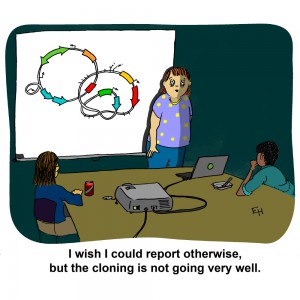 Plasmid DNA preparation is one of the fundamental techniques of molecular biology research. It goes without saying that you want to maximize your plasmid DNA yield as much as possible. Below are a few tips to help you get the most out of every Plasmid prep.
Plasmid DNA preparation is one of the fundamental techniques of molecular biology research. It goes without saying that you want to maximize your plasmid DNA yield as much as possible. Below are a few tips to help you get the most out of every Plasmid prep.
Increase Your Culture Volume
Most plasmid prep systems can process a range of volumes. For example, the PureYield™ Miniprep System can process 600μl to 3 ml of culture. Note: Exceeding the recommended culture volume can result in decreased yields because the increased biomass can lead to insufficient lysis and lysate clearing problems.
Use Optimized Culture Conditions
Media: We recommend growing cells in 1X Luria-Bertani (LB) medium. The use of rich medium, such as 2X YT, CircleGROW®, Terrific broth, or LB-Miller medium, which contains more NaCl, can significantly increase yields, provided that the biomass is within the acceptable range.
Culture incubation times: Low-density bacterial cultures yield relatively low amounts of DNA. Overgrown cultures produce suboptimal yields and excessive chromosomal DNA contamination. Do not use cultures grown longer than 18–20 hours.
Start Your Culture Off Right
If you will be using 1–100 ml of culture, pick an isolated colony from a freshly streaked plate and inoculate LB medium [+antibiotic(s)]. Incubate with shaking for 8–16 hours at 37 °C before harvesting.
If you will be using 100–1,000 ml of culture, pick an isolated colony from a freshly streaked plate, inoculate 5–50 ml of LB medium [+ antibiotic(s)] and grow for 8 hours to overnight at 37 °C. Next, inoculate a larger volume of culture medium [+ antibiotic(s)] by diluting the starter culture 100- to 500-fold. Incubate for 12–16 hours with shaking before harvesting cells.
Know Your Plasmid
After culture conditions and bacterial host, the copy number is the next factor that influencse plasmid DNA yield. Copy number is primarily determined by the replicon, which is the region of DNA that surrounds and includes the origin of replication. The replicon controls plasmid replication by bacterial enzyme complexes, controlling the plasmid copy numbers, and thus DNA yield.
Plasmids are often categorized by copy number:
High Copy Number = 100s of copies of plasmid per cell.
Low Copy Number = 10s of copies of plasmid per cell.
